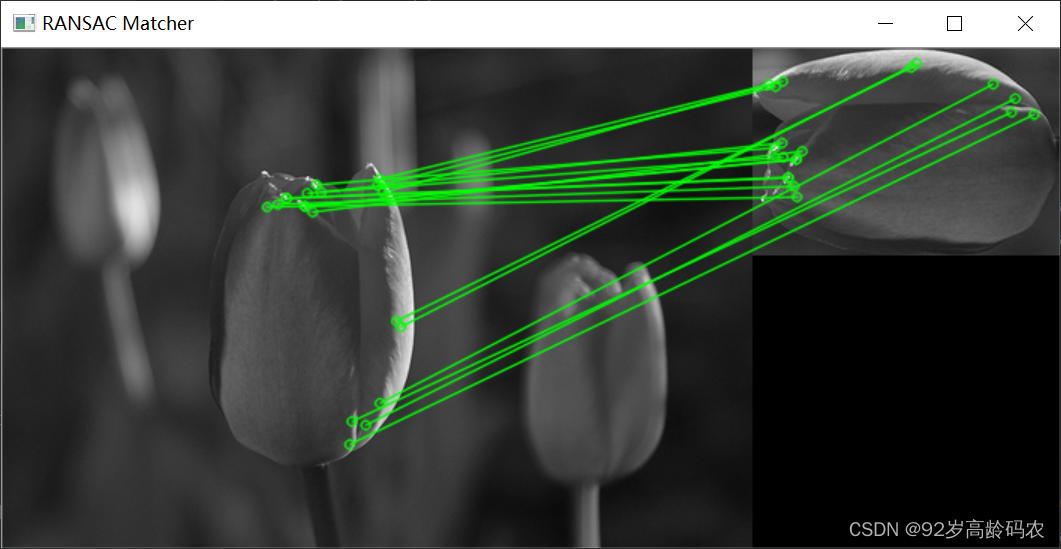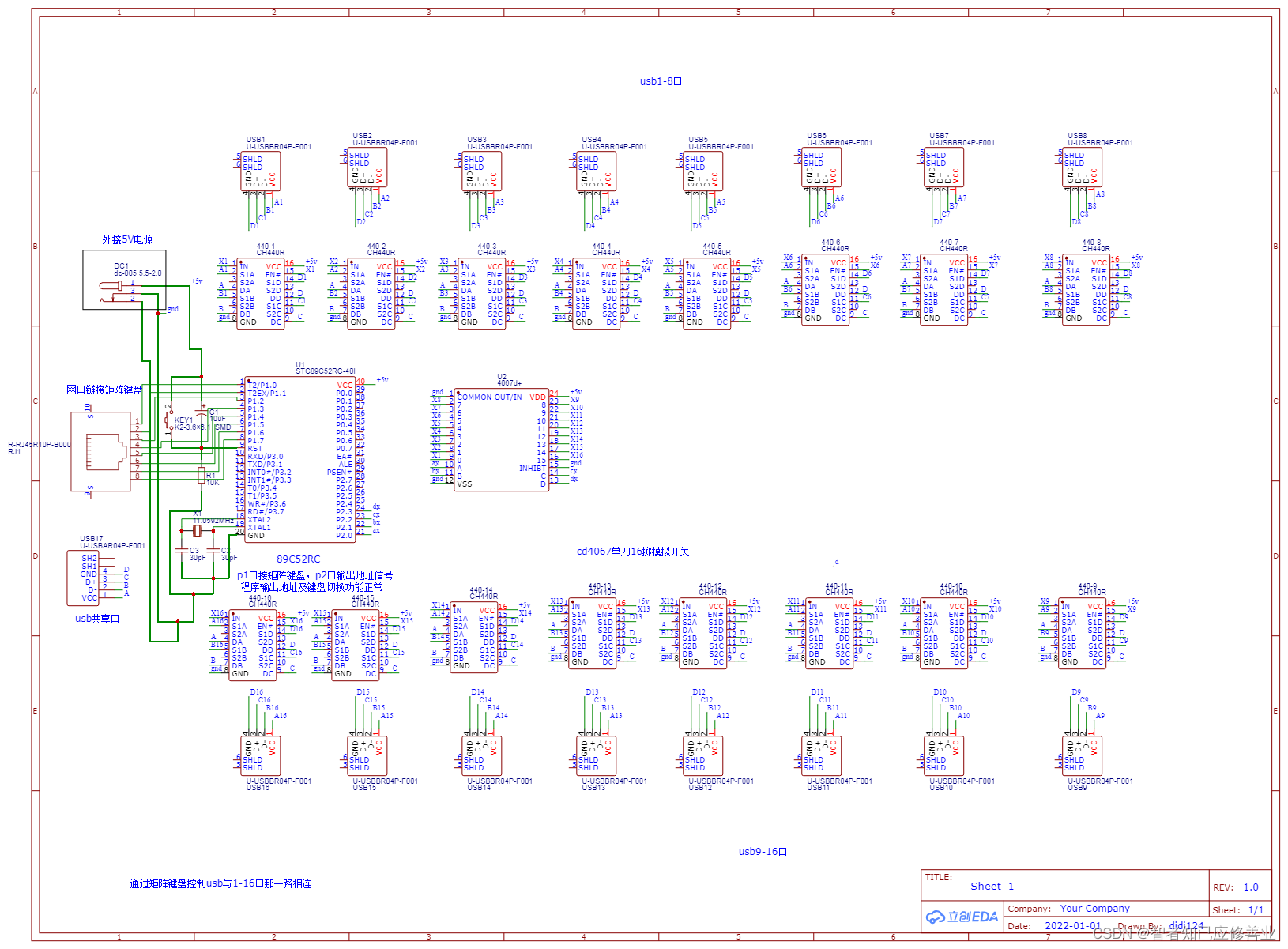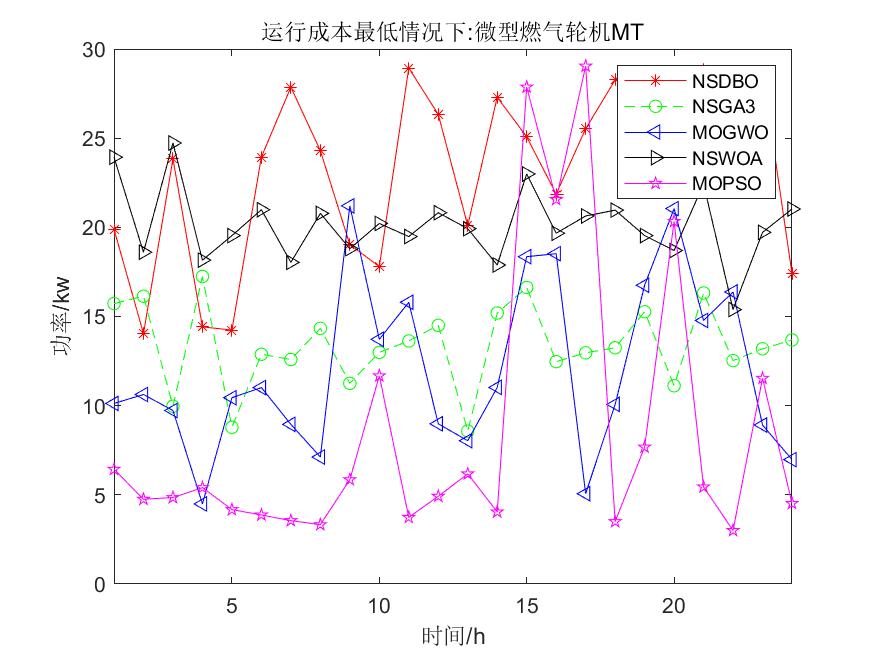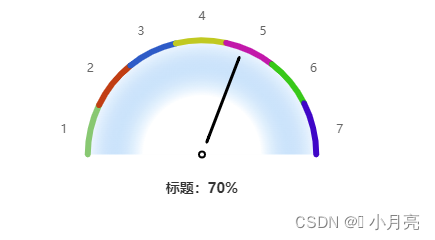- 🍨 本文为🔗365天深度学习训练营 中的学习记录博客
- 🍖 原作者:K同学啊 | 接辅导、项目定制
- 🚀 文章来源:K同学的学习圈子
文章目录
- 任务
- 任务拆解
- 开始修改
- C2模块
- 修改yolo.py
- 修改模型配置文件
- 模型训练
上次已经做了一个对YOLOv5的魔改任务,这次继续魔改。使用的素材还是之前说到的C2模块,但这次会对模型进行范围更大的修改
任务
将原模型修改为新模型
原模型如图:
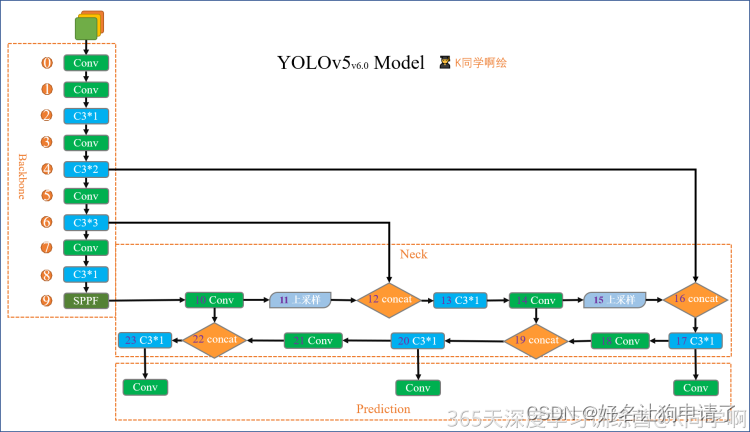
新模型如图:
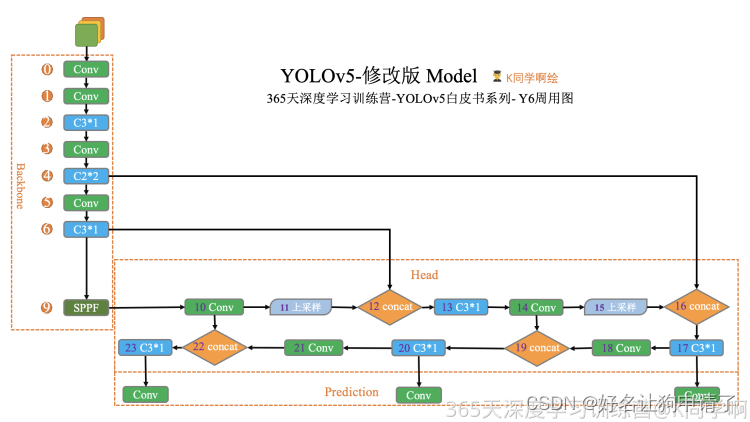
任务拆解
首先分析两个模型之间的改动有哪些
- 第4层的C3*2修改为了C2*2
- 第6层的C3*3修改为了C3*1
- 移除了第7层的卷积
- 移除了第8层的C3*1
其中C2模块是由C3模块修改而来,在之前的博客中也提到过,这里贴下图

开始修改
C2模块
首先还是要先编写一个C2模块。打开models/common.py在class C3附近新建一个我们的C2模块
class C3(nn.Module):
# CSP Bottleneck with 3 convolutions
def __init__(self, c1, c2, n=1, shortcut=True, g=1, e=0.5): # ch_in, ch_out, number, shortcut, groups, expansion
super().__init__()
c_ = int(c2 * e) # hidden channels
self.cv1 = Conv(c1, c_, 1, 1)
self.cv2 = Conv(c1, c_, 1, 1)
self.cv3 = Conv(2 * c_, c2, 1) # optional act=FReLU(c2)
self.m = nn.Sequential(*(Bottleneck(c_, c_, shortcut, g, e=1.0) for _ in range(n)))
def forward(self, x):
return self.cv3(torch.cat((self.m(self.cv1(x)), self.cv2(x)), 1))
class C2(nn.Module):
def __init__(self, c1, c2, n=1, shortcut=True, g=1, e=0.5):
super().__init__()
c_1 = c2 // 2
c_2 = c2 - c_1
self.cv1 = Conv(c1, c_2, 1, 1)
self.cv2 = Conv(c1, c_1, 1, 1)
self.m = nn.Sequential(*(Bottleneck(c_2, c_2, shortcut, g, e=1.0) for _ in range(n)))
def forward(self, x):
return torch.cat((self.m(self.cv1(x)), self.cv2(x)), 1)
修改yolo.py
修改yolo.py中函数parse_model中的代码,使模型支持我们刚写的C2模块
def parse_model(d, ch): # model_dict, input_channels(3)
# Parse a YOLOv5 model.yaml dictionary
LOGGER.info(f"\n{'':>3}{'from':>18}{'n':>3}{'params':>10} {'module':<40}{'arguments':<30}")
anchors, nc, gd, gw, act = d['anchors'], d['nc'], d['depth_multiple'], d['width_multiple'], d.get('activation')
if act:
Conv.default_act = eval(act) # redefine default activation, i.e. Conv.default_act = nn.SiLU()
LOGGER.info(f"{colorstr('activation:')} {act}") # print
na = (len(anchors[0]) // 2) if isinstance(anchors, list) else anchors # number of anchors
no = na * (nc + 5) # number of outputs = anchors * (classes + 5)
layers, save, c2 = [], [], ch[-1] # layers, savelist, ch out
for i, (f, n, m, args) in enumerate(d['backbone'] + d['head']): # from, number, module, args
m = eval(m) if isinstance(m, str) else m # eval strings
for j, a in enumerate(args):
with contextlib.suppress(NameError):
args[j] = eval(a) if isinstance(a, str) else a # eval strings
n = n_ = max(round(n * gd), 1) if n > 1 else n # depth gain
# 在这个集合中增加了C2模块
if m in {
Conv, GhostConv, Bottleneck, GhostBottleneck, SPP, SPPF, DWConv, MixConv2d, Focus, CrossConv,
BottleneckCSP, C3, C2, C3TR, C3SPP, C3Ghost, nn.ConvTranspose2d, DWConvTranspose2d, C3x}:
c1, c2 = ch[f], args[0]
if c2 != no: # if not output
c2 = make_divisible(c2 * gw, 8)
args = [c1, c2, *args[1:]]
# 这这个集合中也增加了C2模块
if m in {BottleneckCSP, C3, C2, C3TR, C3Ghost, C3x}:
args.insert(2, n) # number of repeats
n = 1
elif m is nn.BatchNorm2d:
args = [ch[f]]
elif m is Concat:
c2 = sum(ch[x] for x in f)
# TODO: channel, gw, gd
elif m in {Detect, Segment}:
args.append([ch[x] for x in f])
if isinstance(args[1], int): # number of anchors
args[1] = [list(range(args[1] * 2))] * len(f)
if m is Segment:
args[3] = make_divisible(args[3] * gw, 8)
elif m is Contract:
c2 = ch[f] * args[0] ** 2
elif m is Expand:
c2 = ch[f] // args[0] ** 2
else:
c2 = ch[f]
m_ = nn.Sequential(*(m(*args) for _ in range(n))) if n > 1 else m(*args) # module
t = str(m)[8:-2].replace('__main__.', '') # module type
np = sum(x.numel() for x in m_.parameters()) # number params
m_.i, m_.f, m_.type, m_.np = i, f, t, np # attach index, 'from' index, type, number params
LOGGER.info(f'{i:>3}{str(f):>18}{n_:>3}{np:10.0f} {t:<40}{str(args):<30}') # print
save.extend(x % i for x in ([f] if isinstance(f, int) else f) if x != -1) # append to savelist
layers.append(m_)
if i == 0:
ch = []
ch.append(c2)
return nn.Sequential(*layers), sorted(save)
修改模型配置文件
参考models/yolov5s.yaml来修改模型的配置
对照着刚才识别到的改动来操作
- 第4层的C3*2修改为了C2*2
将backbone下面的数组第4个元素中的C3修改为C2
# 旧
[-1, 6, C3, [256]],
# 新
[-1, 6, C2, [256]],
- 第6层的C3*3修改为了C3*1
将backbone下面的数组第6个元素中的 number由9修改为3
# 旧
[-1, 9, C3, [512]],
# 新
[-1, 3, C3, [512]]
- 移除了第7层的卷积
- 移除了第8层的C3*1
删除backbone中第7个和第8个元素
[-1, 1, Conv, [1024, 3, 2]], # 7-P5/32
[-1, 3, C3, [1024]],
修改到当前这一步,我以为就已经完成了,但是实际上只完成了一半。
通过对前面知识的回顾,Concat模块会引用上层的模块的输出,体现在配置文件中,就是会引用数组中的下标,但是我们在数组中删除了两个元素,会使数组原本的索引失效。
通过上面的模型结构图也可以发现,删除两层后,6层以后的下标都要减2。于是修改配置文件中的head下面的配置
# YOLOv5 v6.0 head
head:
[[-1, 1, Conv, [512, 1, 1]],
[-1, 1, nn.Upsample, [None, 2, 'nearest']],
[[-1, 6], 1, Concat, [1]], # 6 不用修改
[-1, 3, C3, [512, False]], # 13
[-1, 1, Conv, [256, 1, 1]],
[-1, 1, nn.Upsample, [None, 2, 'nearest']],
[[-1, 4], 1, Concat, [1]], # 4 不用修改
[-1, 3, C3, [256, False]], # 17 (P3/8-small)
[-1, 1, Conv, [256, 3, 2]],
[[-1, 14], 1, Concat, [1]], # 原来的14现在是12了
[-1, 3, C3, [512, False]], # 20 (P4/16-medium)
[-1, 1, Conv, [512, 3, 2]],
[[-1, 10], 1, Concat, [1]], # 原来的10现在是8了
[-1, 3, C3, [1024, False]], # 23 (P5/32-large)
[[17, 20, 23], 1, Detect, [nc, anchors]], # 原来的17,20,23对应现在的15,18,21
]
如此改完后,我又一次认为已经完成了,但是跑了一下却报错了。如图:

通过错误信息可以发现是特征图的维度不一致导致的。于是回头分析我们所有的改动,C2模块天生就和C3模块的输入和输出维度一样,所有可以无缝替换、增加到模型中。另外之所以可以实现C3*n的效果,就是因为单个模块的输入和输出也一样。
所以问题不会出现在对C3->C2的改动。剩下的就是删除了两层中有一层是卷积。于是回头看了一下删除的卷积的,[-1, 1, Conv, [1024, 3, 2]],它的kernelsize是3,stride是2,这是一个会让特征图的尺寸缩小一半的卷积,由于我们删除了它,后面的流程中特征图的尺寸会和原来有所不同,最终导致错误。我们需要想办法弥补这个差异。
在head的第一层中,使用了一个1x1的卷积,我们把它修改为kernelsize=3,stride=2的卷积。
# 前
head:
[[-1, 1, Conv, [512, 1, 1]],
# 后
head:
[[-1, 1, Conv, [512, 3, 2]],
最终模型配置文件被修改为
# YOLOv5 🚀 by Ultralytics, AGPL-3.0 license
# Parameters
nc: 80 # number of classes
depth_multiple: 0.33 # model depth multiple
width_multiple: 0.50 # layer channel multiple
anchors:
- [10,13, 16,30, 33,23] # P3/8
- [30,61, 62,45, 59,119] # P4/16
- [116,90, 156,198, 373,326] # P5/32
# YOLOv5 v6.0 backbone
backbone:
# [from, number, module, args]
[[-1, 1, Conv, [64, 6, 2, 2]], # 0-P1/2
[-1, 1, Conv, [128, 3, 2]], # 1-P2/4
[-1, 3, C3, [128]],
[-1, 1, Conv, [256, 3, 2]], # 3-P3/8
[-1, 6, C2, [256]],
[-1, 1, Conv, [512, 3, 2]], # 5-P4/16
[-1, 3, C3, [512]],
[-1, 1, SPPF, [1024, 5]], # 7
]
# YOLOv5 v6.0 head
head:
[[-1, 1, Conv, [512, 3, 2]], # 8 必须使用stride=2来弥补backbone中删除的卷积,不然后面特征图的尺寸对不上
[-1, 1, nn.Upsample, [None, 2, 'nearest']], # 9
[[-1, 6], 1, Concat, [1]], # cat backbone P4 10
[-1, 3, C3, [512, False]], # 11
[-1, 1, Conv, [256, 1, 1]], # 12
[-1, 1, nn.Upsample, [None, 2, 'nearest']], # 13
[[-1, 4], 1, Concat, [1]], # cat backbone P3 14
[-1, 3, C3, [256, False]], # (P3/8-small) 15
[-1, 1, Conv, [256, 3, 2]], # 16
[[-1, 12], 1, Concat, [1]], # cat head P4 17
[-1, 3, C3, [512, False]], # (P4/16-medium) 18
[-1, 1, Conv, [512, 3, 2]], # 19
[[-1, 8], 1, Concat, [1]], # cat head P5 20
[-1, 3, C3, [1024, False]], # (P5/32-large) 21
[[15, 18, 21], 1, Detect, [nc, anchors]], # Detect(P3, P4, P5)
]
模型训练
所有的修改至此就完成了,使用train.py脚本训练一下修改后的模型。结果如图:


